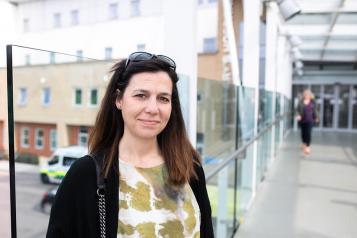Bridging the Gap: How Digital Poverty Affects Healthcare

What is digital poverty?
Digital poverty, also known as the digital divide, refers to the gap between those who have access to reliable, high-speed internet and the necessary devices, and those who do not. It covers not only internet access but also digital literacy and the ability to use digital tools effectively. Essentially, digital poverty means being left behind in the digital age.
The digital divide and healthcare
In today's world, healthcare is increasingly digitized. Here are some ways digital poverty can impact an individual's healthcare:
1. Limited access to health information
The internet is a treasure trove of health-related information. People can learn about symptoms, treatments, and preventive measures online. However, those facing digital poverty may struggle to access this valuable resource. Lack of internet access can limit awareness of health issues, making it difficult for individuals to take proactive steps for their well-being.
2. Barriers to telehealth services
Telehealth, which involves consulting with healthcare providers through video calls or messaging, gained prominence during the COVID-19 pandemic. It offers a convenient way to receive medical advice, especially for those with mobility issues or living in remote areas. However, digital poverty can limit one's ability to participate in telehealth appointments, potentially delaying necessary medical care.
3. Difficulty in managing health records
Digital health records have streamlined healthcare management for many. Patients can easily access their medical history, test results, and appointments online. But individuals facing digital poverty might struggle to maintain these records, potentially leading to mismanagement of their health information and treatment plans.
4. Limited access to health apps
Health apps have become increasingly popular for tracking fitness, monitoring chronic conditions, and promoting overall wellness. Unfortunately, those living with digital poverty may not have access to these tools, therefore missing out on the benefits of convenient health management.
5. Reduced health literacy
Digital literacy is now closely tied to health literacy. Understanding health-related websites, apps, and online resources is crucial for making informed decisions about one's health. Without digital literacy, individuals may misinterpret information or struggle to communicate effectively with healthcare providers.
Bridging the gap
So, what can be done to bridge the gap and ensure that digital poverty doesn't worsen healthcare disparities? Here are some potential solutions:
1. Expand internet access
Efforts should be made to provide affordable and accessible internet services to under-served communities. This could involve government initiatives, partnerships with private companies, or community-based solutions.
2. Promote digital literacy
Digital literacy programmes can empower individuals with the knowledge and skills needed to navigate the digital world effectively. These programmes can be offered in schools, community centres, and libraries.
3. Telehealth initiatives
Healthcare providers can work to ensure that telehealth services are accessible to all patients. This may involve offering telephone consultations or providing devices and internet access to those in need.
4. Mobile health clinics
Mobile health clinics can reach individuals in remote areas who may lack access to traditional healthcare facilities. These clinics can provide both medical care and digital literacy resources.
Conclusion
Digital poverty is a significant issue in today's world, and its impact on healthcare is undeniable. To create a more equitable healthcare system, we must address the digital divide and ensure that everyone has the tools and knowledge needed to access and benefit from digital healthcare resources. By doing so, we can take a significant step toward improving the health and well-being of everyone, regardless of their digital access.
Become a digital inclusion champion
If you have a passion for addressing digital poverty, we invite you to apply for a role as one of our Community Researchers at Healthwatch Cambridgeshire and Peterborough. Our organization is beginning an exciting new community listening project that shines a spotlight on digital inclusion and its major implications for accessing health and care services.
We are currently in the process of recruiting dedicated Healthwatch Community Researchers in Huntingdonshire, Peterborough, and Fenland. These volunteers will play a pivotal role in executing the project, engaging with local residents to gather insights about their unique experiences.
As a Community Researcher, you will actively participate in conducting surveys, facilitating workshops, and conducting patient interviews. You will have the opportunity to listen to the perspectives of individuals managing long-term conditions, such as diabetes, as well as those who face challenges accessing essential services. Following the completion of your training, each Community Researcher will receive a £75 involvement fee for every half day dedicated to the project.
The feedback we collect from patients and the public will contribute to creating a better healthcare system by fostering collaboration and the development of improved services tailored to the needs of our local communities.
Our Healthwatch Community Researchers will receive comprehensive training, ongoing support, and the chance to be part of three distinct community projects spanning the next 18 to 24 months. Join us in making a positive impact on digital inclusion and healthcare accessibility for our community.


